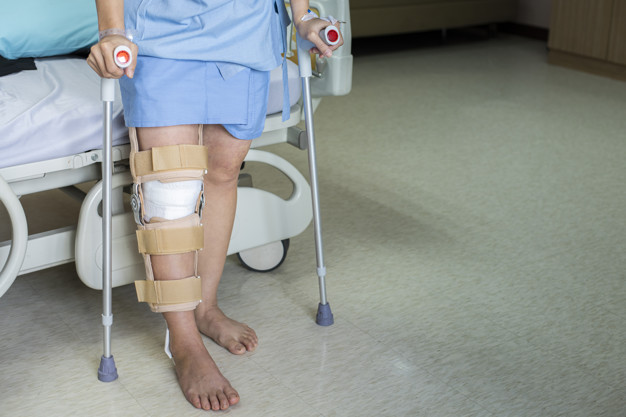Recommendations for Patient Activity After Knee Replacement

What can You do After Knee Replacement Surgery?
Recovering from knee replacement surgery can be very difficult, mainly without the help of supporters and family.
For many, the first few days at home are the most challenging. The person you are caring for is probably stress and in shock. They may be depressed or scared because it is hard to get around and do something for you.
This happens when you want it the most. It’s important to be quiet with your family member as you adjust to your new character. There are many things you can do to make this change regular.
=> Pillows to raise the lower legs
=> A bedside table or urinal if the toilet is not available
=> A bed that is not too high or low from the ground
=> Ice packs for the knees
=> Telephone or cellphone and charger to call for help
=> Easily accessible, recognizable, and well-organized drugs
=> A walker or crutches
=> Writing material to take note of or list questions for the healthcare team
=> Comfortable sleepwear
=> Comfortable shoes that are safe to walk around the house
=> Bandage to change the dressing
=> Lights or lamps with simple controls
=> Clean, dry cotton cloth
Make sure there is lots of food and make sure helpful things are easily available for you. Remove items from the room that could cause a breakdown.
Get Medical Approval
Motivation is needed to move the rehabilitation program forward. For many, this means walking three minutes 30 or 2 times a day. Doctors may also suggest exercising for an additional 20 to 30 minutes two or three times daily.
=>> The person feels that walking or exercising is disruptive. That's normal. If they show a willingness to stop their rehabilitation plan, remind them that what they are thinking is normal and that rehabilitation will help speed up their healing.
=>> Helping them plan their efforts, results, and growth can help keep them motivated. Running and walking with them can also help keep them on the path.
=>> Supports to know more about the restoration timeline for total knee replacement.
=>> Keep a list of issues for Medicaid specialists
=>> It is common to question after surgery and during rehabilitation. Go to the old school with a pen and paper pad or download a note-taking app so you can answer questions as soon as they arise.
=>> You probably have questions about how to provide care. Documenting your questions and concerns will help you remember to discuss it with the care team.
Here is the Typical Recovery Timeline for Post-Operation Patients:
1. Able to leave the hospital - This depends on your physician and overall progress but most patients are discharged after 2-5 days of inpatient care. In general, if you are pain-free, able to perform multiple steps with a crutch or wrist, and be able to bend your knees, your doctor will recommend sending you home or to a short-term rehabilitation care facility.
2. Able to use assistive devices - Depending on your progress you can use a bamboo or crutch immediately after 2 weeks of surgery.
3. WAble to start physical therapy - You are usually encouraged to move around as soon as possible after surgery. Physical therapy can be done within a week of your procedure.
4. Able to drive - After 4-6 weeks if you have had a driving operation on your driving legs. If your non-dominant limb was operated on, you can drive immediately until you are on the pain meds and regain muscle strength.
5. Able to go back to work - after 1-3 months depending on the job. People who work a desk job may return after a month, while those who have a job who need to stand, fold or lift will take longer to return. If your job involves a lot of stress on your knees, you won’t be able to go back to work. Visit Now for More Information at Parekhs Hospital




